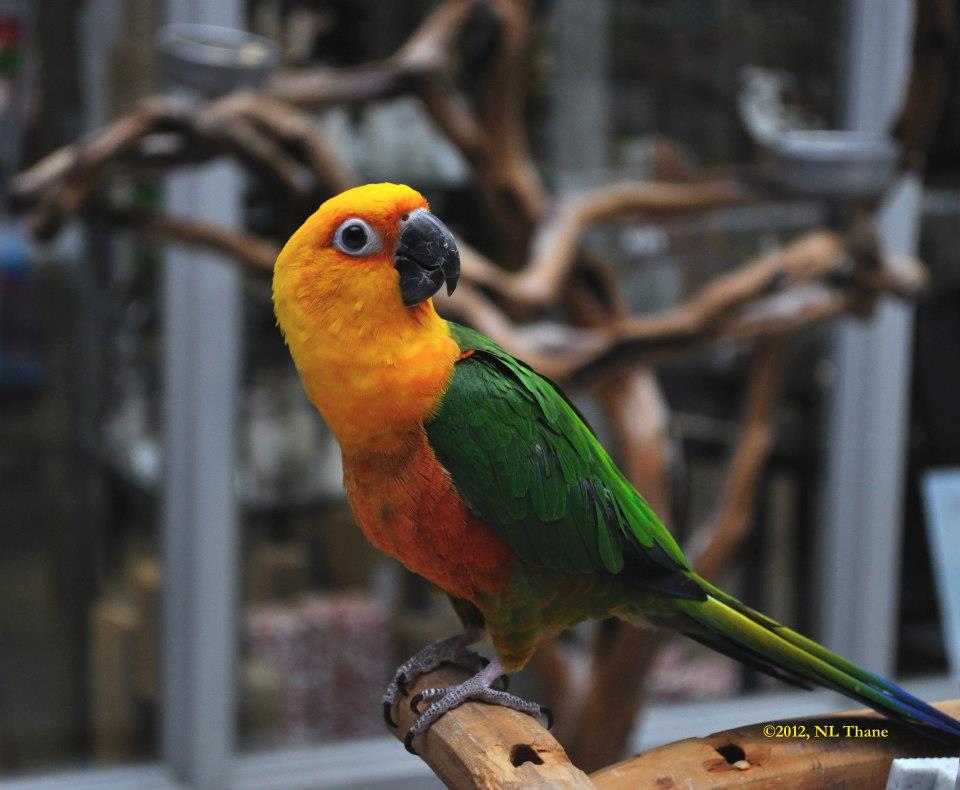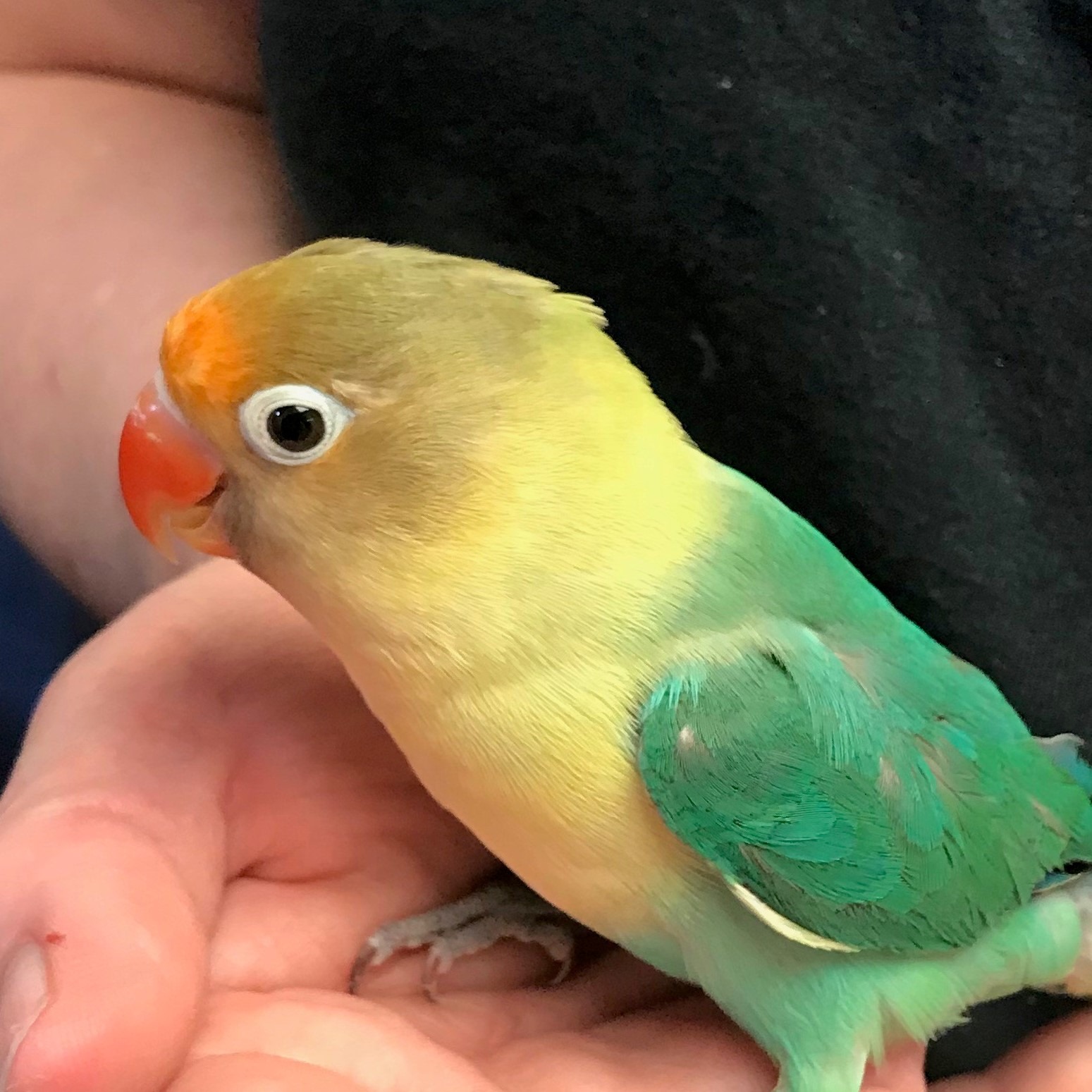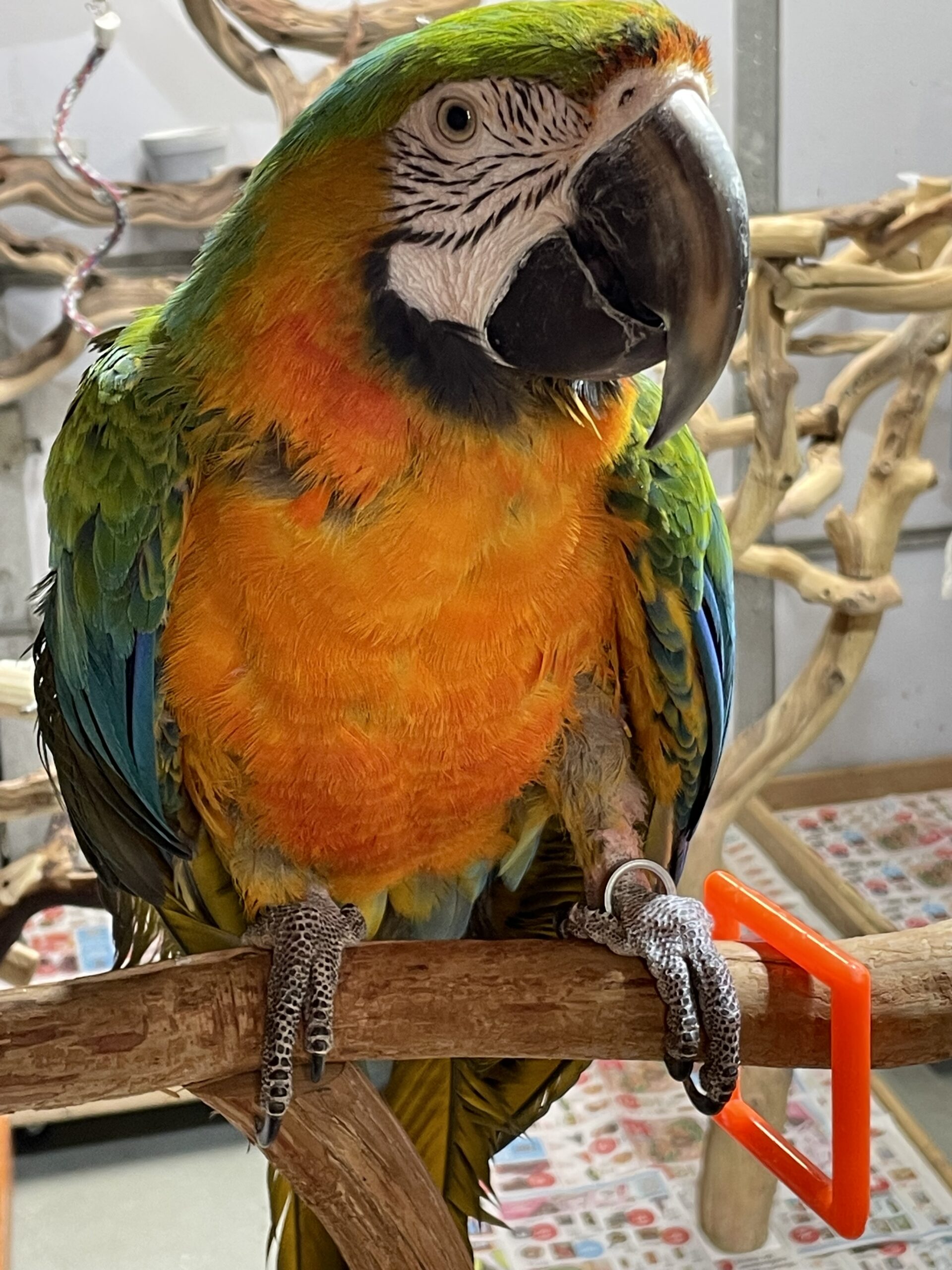Exotic Birds for Beginners
What is a Parrot?
A parrot is a type of exotic bird that has a hooked beak and feet where two toes point forward and two point backward. There are many different species of parrots that are kept in captivity as pets. Their scientific name is psittacine. There are some other birds that are commonly kept in captivity, such as canaries and finches which are not parrots. They are part of the passerine family of birds. The terms "exotic birds", "parrots", "captive birds" are used interchangeably on this site. I'm not a big fan of the term "pet birds" only because I don't think of them as pets. I think of them as captive wild animals that are commonly kept as companions.

Parrots are Not Domesticated
Exotic birds are now one of the most popular kind of animals kept as pets. However, one of the biggest differences between parrots and other pets is that parrots are not domesticated. While birds have been kept in captivity for quite a while, they have not been bred for specific traits that would allow them to live easily with humans. Exotic birds are technically still wild animals. They retain all of their instinctual behaviors and will behave the same as their wild cousins in the jungles and grasslands around the world. This means that they have strong urges to behave certain ways that may make life in captivity difficult and frustrating for both the bird and the bird's guardian.
Captive birds are generally put into different size categories. Below are some of the birds for each category:
Small Passerines
- Canaries
- Finches
- Doves
Small Parrots
- Budgerigars (commonly called parakeets)
- Parrotlets
- Lovebirds
- Cockatiels
- Caiques
- Quakers (also called Monk Parakeets)
Medium Parrots
- Conures
- Senegals
- African greys
- Eclectus
- Pionus
- Lories and Lorikeets
- Poicephalus and birds of the genus Psittacula
Large Parrots
- Amazon parrots
- Cockatoos
- Macaws
For people who are new to the bird world, I only recommend smaller birds. While all birds require a great deal of care and attention, smaller birds are generally a bit easier to care for.
Things you should know about exotic birds
They're all noisy. There is no such thing as a quiet bird. They all either chirp, sing, call, talk, yell, or scream (or all of the above!) at various times of the day. In the wild, parrots use calls to communicate with their flock. For the parrot in the wild, the flock means safety. Without the flock, a parrot becomes a quick meal for a predator! This is why, in our homes, our parrot may call frantically for us when we leave the room. We are their flock! When we're not around, they can become uneasy, upset, and anxious. Having other birds in the home can help make them feel safer. While you're home, it can help to simply establish a "contact call" with your bird, such as "here I am, how are you doing?" when you're not in the room.
They're all messy. In the wild, think about how birds behave. While foraging for food and eating, they often eat a few bites of a food and then toss it to the ground. This is wonderful in the jungle because it helps to disperse seeds on the forest floor. In our homes, those seeds aren't so beneficial to our carpets, but your parrot doesn't know that. Birds will toss and fling their foods, poop whenever and wherever they feel like it, and they also lose feathers in a similiar way to a dog shedding. Without daily cleaning, my bird room would be buried under a blanket of seed hulls, rotten broccoli, dried poop, and feathers!
Most parrots are very social. In the wild, parrots live in flocks that can include either mixed species (Macaws and Amazon parrots can live in flocks together) or single flocks (African greys prefer to stick to their own kind). When they choose a mate, they often stay with that mate for life. And they're very affectionate with each other, preening and feeding each other throughout the day. This is one of the reasons why people think that birds make great pets, but in reality, it's one of the biggest reasons people get rid of their birds. Most people don't have the time or energy to provide a parrot with 100% of their social needs, and so the bird becomes distraught and screams or pulls out her feathers, or both. Some species are more independent than others, such as Budgies, while the most "emotionally needy" parrot could easily be the Moluccan Cockatoo. Keeping more than one bird, preferably a few birds that are bonded together can help keep them happy.

Most captive birds need a varied diet. Parrots eat a great variety of plants and protein sources in the wild. Australian birds like Cockatiels eat lots of grasses and seeds, African grey parrots are known to ingest soil, and South American birds like Macaws and Amazons are known to frequent clay licks in the jungle. In captivity, it can be very difficult to mimic a parrot's natural diet, and in some cases, we wouldn't want to copy it exactly. In the wild parrots are much more physically active, flying miles every day, than they are in our homes. Parrots in captivity need less fat and carbohydrates than they would get in the jungles and grasslands.
Some birds, like Lories and Lorikeets, need very specialized diets. These birds should be fed a a very specific nectar diet. They should never be fed seeds. A basic parrot diet should include plenty of fresh food including dark-colored vegetables such as leafy greens, peppers, broccoli, and carrots, as well as protein sources such as well-cooked legumes and lentils, and some other foods such as whole wheat pasta, and fun foods that incorporate foraging behaviors, such as a nut (Almonds are a great choice for larger birds) hidden under a toy or in a a toy designed for this purpose. A small amount of seed should be ok for most birds, though take care not to overfeed with seeds, since birds relish them. They are very high in fat and do not offer much in the way of nutrition.
Parrots need a lot of room. Between their cage and some playstands, most birds need quite a bit of room in your home. Remember that birds, by design, are meant to fly. I do believe that birds should be allowed safe flight in the home every day, for their physical and emotional health, but it must be done under very close supervision. Cages for birds should be larger than most pet stores recommend. Birds should have enough room to spread and flap their wings without hitting anything (same with their tails), and they should have plenty of room to hop from perch to perch without bumping into toys or food dishes. Ideally, all birds living in captivity should have access to a free flight aviary, either in the home or built outside of the home.

Parrots need toys. All exotic birds need toys. They don't have to be expensive toys bought in a store, though, which most larger birds destroy very quickly anyhow. Toys are very easy to make at home. You can find untreated wood at home supply stores, and these can quickly have holes drilled in them to string along pieces of twine. Some birds will play all day with a roll of adding machine paper! Acrylic toys are nearly indestructible, but since most birds love to chew, they might not be so fun for birds. Be creative; just be sure all toys are made of safe materials.
Birds need a doctor, too! All birds should have their very own veterinarian. Some vets are board-certified avian vets, which requires more schooling, but there are also very good avian vets who are not board-certified. To find a good vet, you can go to www.aav.org, or ask around with other veterinary offices or bird clubs about who they recommend. Birds should get regular check-ups. They generally aren't given vaccinations like dogs or cats simply because there aren't very many vaccinations available for birds. They also cannot be routinely spayed or neutered. Your vet will be able to tell if your bird isn't feeling well (birds naturally hide all signs of illness) and give you recommendations on diet and care issues.
They can live a long time! Most parrots live much longer than cats or dogs. Smaller parrots can live 10-15 years, but the medium parrots generally live 30-50 years. Larger parrots generally live 50-80 years! Most parrots are a lifetime commitment.
Many parrots are available for adoption at shelters. Most people wouldn't think about looking for a bird to adopt at a shelter or avian rescue facility. But the sad reality is that there are many birds living in the over 100 avian rescue facilities in the United States today. Many traditional dog and cat shelters are also beginning to see birds come through their doors, though they are very poorly equipped to care for them. Before going to a pet store for a bird, please consider adoption.